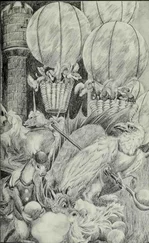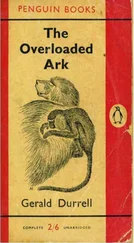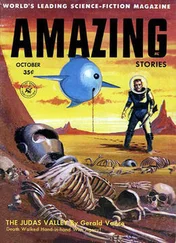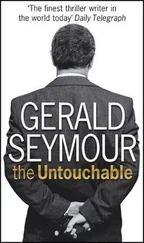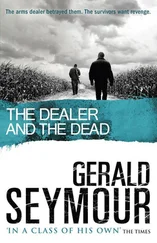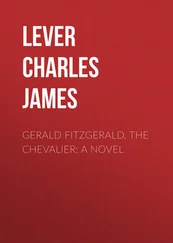But I said: ‘Wax doll or bronze doll, what is the difference? If it pleases the old gentleman, let him have it. You know how generous he is when he is pleased. You’ll have to hang about in the workshop for several months, perhaps. You will be bored. Instead of playing with a bit of putty, play with a bit of wax, and do yourself some good at the same time.’
De Kock was mollified; and set up a great lump of clay on a stand and went to work on the King’s head. His technique was, if I remember rightly, as follows: first he modelled the head with microscopic accuracy in sculptor’s clay. When this was dry, he made with infinite care a plaster mould, into which a special sort of wax was poured. So, the mould being taken away, section by section, like pieces of a jigsaw puzzle, out came the head, looking so horrible that it gave me a nightmare. It did not look a bit like the King at that stage, because de Kock had made him without the hair and the beard.
The putting in of the King’s hair was the most tedious part of the business, because in a real life-like waxwork image every hair must be put in separately. I should not have cared for the job of putting in King Nicolas’s beard a hair at a time; but when de Kock was at work he was a fanatic in his thoroughness. That is why he was what he was, poor fellow. Also, in spite of his first angry reluctance, he became engrossed in the King’s head. He went to a shop where such things were sold, and bought an enormous quantity of beautiful silky white hair. (The starving peasant women of the Balkans, some of whom have beautiful heads of hair, sell their crowning glory for a few copper coins in order to buy something to eat.) The old King watched, blinking, fascinated. Then, looking at him, an idea occurred to me. I said to de Kock: ‘Since the old gentleman has taken such an interest in this doll, as you call it, why not let us combine our two arts? If you can fix your model constructionally, I can undertake to do the rest.’
‘What do you mean?’ asked de Kock.
‘Why,’ I said, ‘it would be no trouble at all for me to devise a clockwork mechanism to make him blink his eyes, sway his poor old head, tremble all over, and move those stiff, shaky hands of his. To me, that would be as easy as making a cuckoo-clock.’
De Kock was delighted with the idea. We arranged it between us secretly, so as to give His Majesty a pleasant little surprise. If he wanted his harmless fun, he could have it. No one knew what we were doing. Dicker was very ill with a disease of the heart – of which, by the way, he died shortly after. So de Kock and I spent all our spare time playing with his dummy and, as a matter of fact, we really began to take quite a fancy to it – as a job, I mean. It had taken hold of us.
The machinery that made the eyes and the head move and the hands tremble was nothing: a mere toymaker’s job. I always liked difficult, intricate pieces of work. So it occurred to me that it might be really amusing to fix the jointed figure so that it could stand up and even take a few stiff rheumaticky paces backwards and forwards. That also was easy – hawkers in the street sell tin toys which can do that very thing; and even turn somersaults. No, it was not complicated enough for me.
Having made the dummy tremble and blink and sit and stand and walk, I now wanted to make it talk.
Well, you know that the phonograph had been invented then, although it was a very crude affair and did not sound real. But then again, neither did the King’s voice sound real – in fact it sounded rather like a scratchy old phonograph record. Also, the King’s voice was the easiest thing in the world for any man to imitate. You can imitate it yourself if you like. Let a lot of saliva run to the back of your throat and groan – there is the King’s voice. I say once again, it was easy. The entire mechanism fitted into the back of the figure between the shoulder-blades and the hips, and was operated by several levers. If you pressed one, the figure stood up. If you pressed another, it walked twelve paces forward and turned on its heel. So if you wanted the figure to pace up and down all you had to do was repeat the pressure on that lever.
Another lever made it sit down. As the thighs and legs made an angle of ninety degrees, the phonograph automatically started. Choking imprecations, together with groans of pain came out of the mouth. All the time the dummy shook and quivered, while a perfectly simple, concertina-shaped bellows inside the head sucked in the air and blew it out, so that the moustache that concealed the mouth was constantly in motion, and you could hear a kind of wheezy breathing.
It was all quite life-like, especially when we dressed it in clothes which we borrowed from the King’s wardrobe. As the King’s Clockmaker, I was a person of great consequence in the Palace. Everybody knew what had happened to Tancredy; they all went out of their way to be polite to me. I could even have had intrigues with Duchesses if I had been so disposed. I had no difficulty in getting from the Master of the King’s Wardrobe a complete outfit of the royal clothes, including fur slippers, a sable dressing-gown and a round velvet cap such as His Majesty invariably wore. When the dummy was dressed we sat it in a deep red velvet chair in the workshop, covered it with a sheet, and waited. At last the moment came. De Kock and I were excited, like children who have prepared a wonderful surprise for a beloved parent and are impatient to reveal it.
The King came in, with his doctor and his attendant holding him up, and was lowered, groaning and cursing, into his usual chair.
‘What have you got there?’ he asked.
I said: ‘A little surprise for Your Majesty.’ Then I pressed two of the levers and whisked away the sheet all in one movement, and the dummy got up, walked twelve paces, which brought it face to face with His Majesty, and turned scornfully on its heel. I had measured my distance. Following it, I pressed another lever and it walked straight back to the chair and turned on its heel again. Another touch and it sat down, and the gramophone started and the great groaning voice bellowed dirty language right into the King’s face.
I looked towards him laughing in anticipation of his delight, but what I saw horrified me. His face had become blue. His eyes seemed to be trying to push themselves out of their sockets. His mouth opened, and he uttered a terrible rattling scream. I still hear that scream in my dreams.
‘Your Majesty,’ I cried, ‘forgive me!’
But he did not hear me. He fell back, and seemed to shrink like a sack of flour ripped open with a knife; and the old doctor, with a face as blue and terrified as the old King’s, felt his heart and stammered: ‘Oh, my God! Oh, my God! Oh, my God! He’s dead – the King is dead!’ And I remember that the sturdy attendant, bursting into tears, threw himself on his knees and cried: ‘Oh, Your Majesty, Your Majesty! Don’t go without me! Take me with you! Oh, Your Majesty!’ He shouted this a heartbroken voice, something like the howl of a dog in the night. Then I heard footsteps; the door opened. I saw Kobalt with a dozen others behind him. Kobalt naturally looked first towards the King’s chair, and when he saw what was there, the blood ran out of his face. Yet he was a quick-thinking man, even at a moment like this. He swung round and shouted: ‘Back to your posts! God help the man I find in this corridor! Colonel of the Guard, a double guard on the outer gates – no one leaves the Palace!’
After that he slid into the workshop, shut the door, approached the royal chair and said: ‘Doctor Zerbin – is His Majesty——?’
‘His Majesty is dead,’ said the doctor, with tears on his face. I felt that it was I who had killed the King and I said: ‘Your Highness, it was all well meant. His Majesty asked us, de Kock and me, to make a figure, for a joke. The King wanted to——’
Читать дальше

